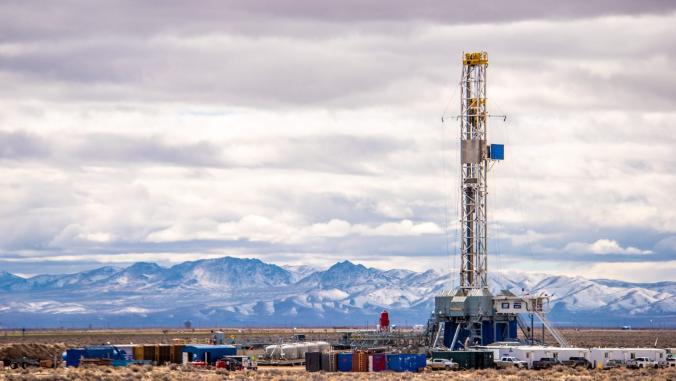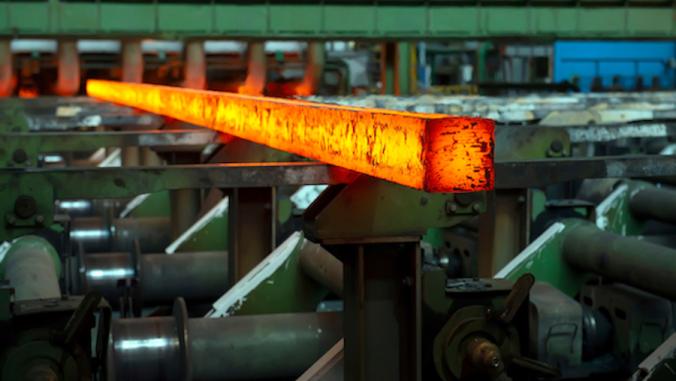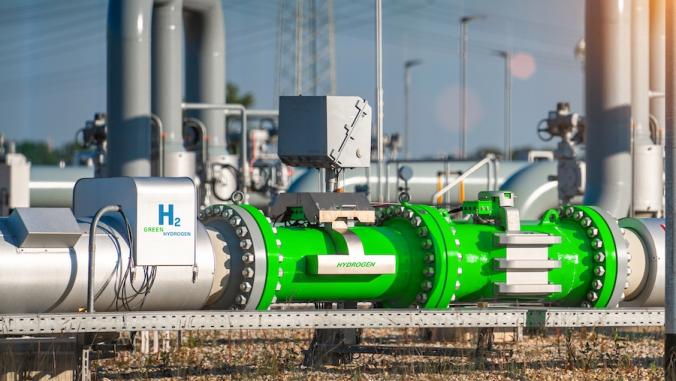The secret to the happy relationship between Smithfield Foods and Dominion Energy
The partnership brings both companies closer to their sustainability goals.

Smithfield Foods, the world’s largest pig producer, and Dominion Energy, one of the country’s largest investor-owned utilities, want you to know they’re happy together. And no, it has nothing to do with Valentine’s Day.
The two companies announced at the end of last year they are doubling down on their program Align Renewable Natural Gas, a partnership spearheaded in 2018 to produce biomethane (also known as renewable natural gas, or RNG). The total investment will be $500 million through 2028.
The investment expands operations that capture the methane from manure lagoons of Smithfield’s pig farmers, which is then processed by Dominion and can be used interchangeably with fracked natural gas in pipelines. The partnership brings both companies closer to their sustainability goals.
Smithfield is striving towards an absolute emissions reductions of 25 percent by 2025, meaning it needs to take into account the emissions associated with its entire supply chain — including the methane from the 15 million pigs it raises annually, which account for about 40 to 45 percent of the company’s emissions.
This week, Dominion announced a commitment to reach net-zero emissions in power generation and natural gas by 2050 (a step up from its previous commitment of an 80 percent reduction by 2050). The utility is touting its expansion of RNG, along with its solar investments and offshore wind leadership, as evidence of its climate leadership.
Bringing home the bacon
The Dominion and Smithfield teams say the partnership is a natural fit.
Smithfield has been looking for ways to use manure beyond fertilizer for years. As a food company, the corporation says it lacked the expertise to move into the RNG market. Enter Dominion.
"As a swine producer, we’re really good at what we do," Kraig Westerbeek, senior director of Smithfield Renewables, told me. "When we start to get into this energy business, we look at this and we think, ‘We’re not energy experts,’ and a company like Dominion is. It just makes a lot of sense, in our opinion, to partner with folks that have the type of expertise that we don’t have as a company."
"We also have similar cultures; we care a lot about contributing to our communities and we have a huge focus on safety and sustainability," added Ryan Childress, Dominion’s director of business development. "Sustainability starts with an idea, and then you have to align to take action," he added, pirouetting into a play on the program’s name, Align RNG.One company can’t solve this issue, but there’s always an expectation for companies to do their part and for companies to stand for something.
Dominion has worked with other private companies on renewable energy initiatives as well. Last year, tech giants with data centers in Virginia, including Microsoft, LinkedIn and Apple, demanded the utility deploy renewable energy to meet any increase in power, rather than natural gas-fired power plants proposed by Dominion.
Childress described this as a "partnership dynamic," not companies pushing the utility to transition to clean energy faster.
"Whether it's food or tech companies, we’re trying to go across industry to find ways to reduce carbon and provide cleaner energy solutions to all of our customers," said Childress.
The maturing RNG market
The idea of using biomethane as a fuel isn’t new. RNG also transforms biomethane, a waste product that impacted emissions goals, into a potential revenue stream for farmers, who get a share of the methane sales.
In the last year or so, however, the idea has picked up serious momentum. There is a confluence of factors adding fuel to the uptick.
First, technology has gotten better, according to Westerbeek. In the past, farms tried to make electricity onsite with biodigester engines that were complicated and expensive. Today, utilities and gas companies can process the biomethane and purify in bulk, either for electricity generation or to displace fracked natural gas.
Second, the RNG market is maturing, meaning farmers and gas companies could make real money. RNG has gained attention as a potential resource to decarbonize the transportation sector, as its carbon intensity is technically negative.
California’s low carbon fuel standard (LCFS) is one of the stronger markets, offering around $200 per credit, incentivizing farmers and financiers across the country to cash in. The market has attracted resources from across North America — including Missouri and Canada — and California’s agriculture department has funded more than 60 (PDF) of dairy biogas projects, with plans to expand.
Dominion plans to sell the RNG from Smithfield’s Utah facility into the California LCFS market. In a separate deal with Duke Energy, Smithfield is also selling RNG into North Carolina to help that state meet its renewable portfolio standard.
The environmental challenge of livestock production
When it comes to climate, Smithfield Foods has a tough row to hoe. Livestock production is emissions-intensive, accounting for about 14.5 percent of all human-caused emissions.
Smithfield has sweeping environmental goals that range from animal stewardship to modest energy reduction goals (5 percent by 2020, from a 2014 baseline). Still, given the fundamental challenges in aligning livestock production with climate goals, Smithfield’s commitment is commendable.
"I think it’s helping move our industry, which is important," said Stewart Leeth, VP of regulatory affairs chief sustainability officer for Smithfield. "One company can’t solve this issue, but there’s always an expectation for companies to do their part and for companies to stand for something, and that’s particularly true with younger people."Whether it's food or tech companies, we’re trying to go across industry to find ways to reduce carbon and provide cleaner energy solutions to all of our customers.
RNG’s complicated math
RNG and its negative emissions accounting is key to Dominion reaching its carbon neutrality goal by 2050. In a release, the company said that capturing the methane from farms will offset "any remaining methane and carbon dioxide emissions from the company's natural gas operations."
According to Dominion’s calculations, mixing just 4 percent of RNG with 96 percent fracked natural gas will offset the carbon footprint completely, as RNG "captures 25 times more greenhouse gas than it releases." (This calculation does not take into account pipeline methane leaks, estimated to be 2 to 3 percent.)
On the same day that Dominion announced its new climate goal, the company’s CEO, Tom Farrell, said during an earnings call that the company is increasing its stake in the controversial Atlantic Coast Pipeline and doesn’t plan on curbing natural gas.
"Recently, we have begun to hear of investor concern that at least in some states, municipal-level ordinances could limit overall demand growth for natural gas utility service," Farrell said. "While that may be true elsewhere, we simply do not see any evidence of slowing customer or investment growth in the states in which we operate gas utilities."
While capturing biomethane and turning it into usable fuel is clearly beneficial, it becomes problematic if used to delay the pace of electrifying buildings and to justify expanding natural gas, which is quickly becoming one of the largest sources of greenhouse gas emissions in the United States.
"This amounts to a glorified offset scheme and a way for Dominion to keep investing in new fracked gas infrastructure in lieu of electrification, which is the best way to decarbonize buildings," said David Pomerantz, executive director of the Energy and Policy Institute, a utility watchdog organization. "RNG does not obviate the need for Dominion to start phasing out its fossil fuel businesses, and that's exactly what the company seems dead-set on avoiding."
This article is adapted from GreenBiz's newsletter Energy Weekly, running Thursdays. Subscribe here.





